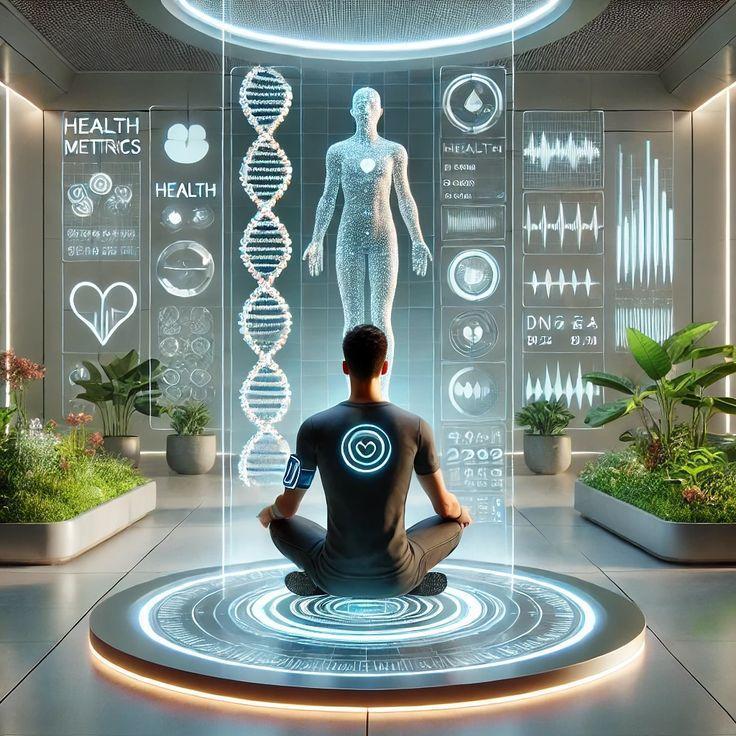Biohacking & Longevity: A Modern Path to Living Longer, Better
Biohacking & Longevity: A Modern Path to Living Longer, Better
In a world where technology and wellness are merging faster than ever, biohacking has emerged as one of the most talked-about trends in health optimization—and at its core lies a timeless human desire: to live longer, healthier, and more meaningfully. From Silicon Valley to wellness retreats, biohacking is no longer reserved for elite technophiles; it’s becoming a global movement toward personal empowerment and radical responsibility for your own biology.
But what is biohacking really? And how does it intersect with the growing science and spirituality of longevity?
Let’s explore.
What Is Biohacking?
Biohacking is the practice of using science, technology, and lifestyle interventions to optimize your body and mind. Think of it as DIY biology—often blending ancient wisdom with cutting-edge innovation.
It can range from simple habits like intermittent fasting, cold plunges, or tracking your sleep, to more advanced approaches like nutrigenomics, nootropics, or stem cell therapy.
At its heart, biohacking is not just about performance—it’s about understanding how your body works and taking conscious control of your health span, not just your lifespan.
The Longevity Connection
Longevity is the science and art of living longer while maintaining vitality, cognition, and energy. It doesn’t mean just adding years to your life, but adding life to your years. Modern longevity science focuses on preventing age-related diseases, reducing cellular damage, and extending healthy function far beyond what we currently consider “normal aging.”
This is where biohacking and longevity meet: Biohacking is the method. Longevity is the goal.
Popular Biohacks for Longevity
Intermittent Fasting
Restricting food intake within a certain window (e.g., 16:8) activates cellular processes like autophagy, which helps remove damaged cells and regenerate healthier ones. It mimics the natural rhythms of scarcity that shaped our evolution and has been shown to improve insulin sensitivity, inflammation, and metabolic function.Cold Exposure & Heat Therapy
Techniques like cold plunges, cryotherapy, or saunas stimulate hormesis—small, controlled stressors that trigger the body’s repair mechanisms. These practices improve circulation, boost mitochondrial health, and reduce systemic inflammation.Optimized Sleep
Deep, consistent sleep is one of the most powerful (and underrated) anti-aging tools. Biohackers track their sleep using wearable tech (like Oura or WHOOP) to fine-tune habits and environments for maximum rest and cellular repair.Nootropics & Supplements
Brain-boosting substances like L-theanine, lion’s mane, NAD+, or magnesium threonate support cognitive longevity. Supplement stacks tailored to mitochondrial support, cellular repair, or DNA protection are increasingly common in the longevity space.Red Light Therapy
Using specific wavelengths of light to stimulate cellular energy (ATP), reduce inflammation, and improve skin health. It’s one of the most popular at-home biohacks for anti-aging and recovery.Personalized Nutrition
Through DNA testing, microbiome analysis, and continuous glucose monitoring, biohackers are now tailoring their diets to their unique biology. The idea: Eat not just for weight, but for genes, energy, and future resilience.Mindfulness & Stress Reduction
Chronic stress shortens telomeres and accelerates aging. Techniques like meditation, breathwork, and vagus nerve stimulation are key longevity tools—showing that mental and emotional regulation are as essential as physical discipline.
The Spiritual Side of Longevity
Interestingly, the conversation around longevity is no longer purely scientific. Many experts now emphasize the spiritual, emotional, and relational aspects of a long, fulfilling life. Purpose, community, love, and joy are emerging as measurable factors in resilience and disease prevention.
Some long-living populations (like those in the Blue Zones) have common lifestyle traits like:
- Daily movement
- Strong social bonds
- Plant-based diets
- Low-stress living
- A deep sense of purpose or spiritual life
Modern biohacking takes note of this and blends data-driven tools with meaningful living.
Is Biohacking for Everyone?
Yes—and no. While some biohacks require expensive devices or lab tests, many of the most effective strategies are free or low-cost: quality sleep, breathwork, movement, fasting, exposure to nature, emotional regulation.
You don’t need to become a cyborg to improve your healthspan. You just need curiosity, intention, and a willingness to experiment.
Getting Started
If you're new to biohacking, start with simple, low-risk areas that give you immediate feedback:
- Track your sleep and adjust your nighttime routine
- Try time-restricted eating for a week
- Incorporate cold showers or sauna for resilience
- Use guided breathwork or meditation apps
- Test your biological age or vitamin levels with an at-home kit
- Join an online biohacking community for ideas and support
As with any wellness practice, listen to your body and approach everything with discernment—not all hacks are suitable for all people.
Biohacking and longevity are not about chasing immortality. They’re about reclaiming authorship of your health, creating energy and focus for what matters most, and making the rest of your life the best of your life.
In an age of information overload and chronic illness, biohacking is not just a trend—it’s a rebellion against passivity. A return to conscious living, backed by data and driven by desire.
And perhaps the most radical act of all is this: choosing to live well now, in order to thrive later.
Be the first to post a message!
